For no reason in particular, it's Dash Day! Check out our double feature on adapting your Mechanologist to the newest expansion! Shahmir Samee explores the deckbuilding end of the Uprising update, while Kiki Labad talks matchups.
With Uprising now released worldwide and the beginnings of a Constructed metagame forming, many of my expectations for which heroes would rise to the top have been subverted. Prism, while still placing respectably in the first week of Road to Nationals season, has once again been suppressed by aggressive strategies from Briar and Viserai. Fai has generally underperformed, unable to race the Runeblades or out-value the control decks. Dromai and Iyslander are beginning to find success as their strategies continue to evolve. In many ways, I would say this is the most varied metagame we have seen since the release of Arcane Rising.
Today, I’m exploring the relevance of a hero who hasn’t dominated the field since the Crucible of War metagame, but is back with a vengeance: Dash, Inventor Extraordinaire.
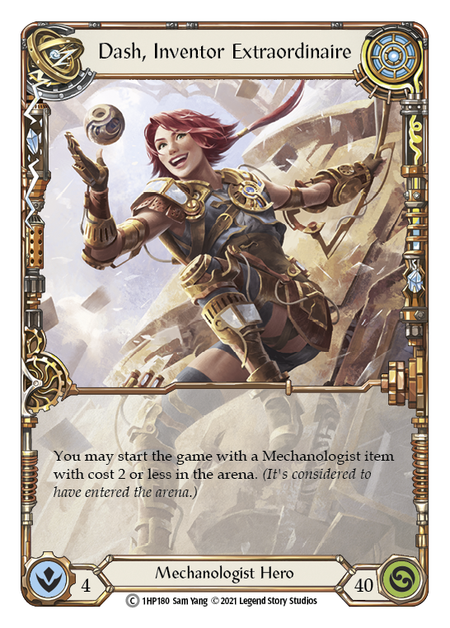
Running on Fumes
Mechanologists received a suite of new items and attacks with the release of Everfest, but Dash was largely suppressed by the dominance of Bravo, Star of the Show. Starvo’s consistent access to dominated attacks prevented control-oriented builds of Dash from blocking his damage sufficiently- taking too much damage before assembling a powerful endgame with the Teklo Plasma Pistol- while his brutal on-hit effects from cards like Oaken Old, Crippling Crush, and Pummel prevented aggressive strategies from keeping cards in hand to race him, leaving Dash with no consistent gameplan against him.
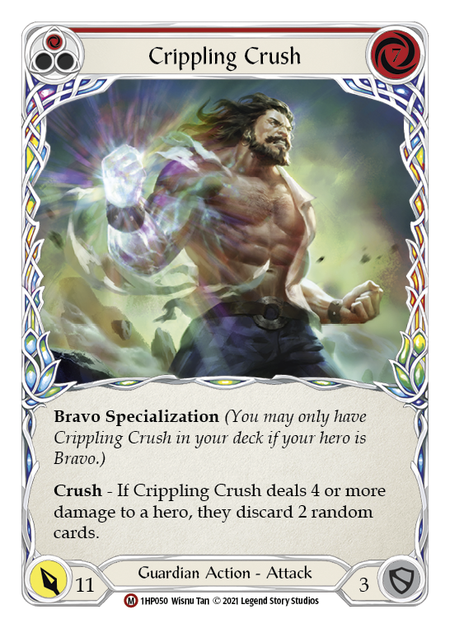
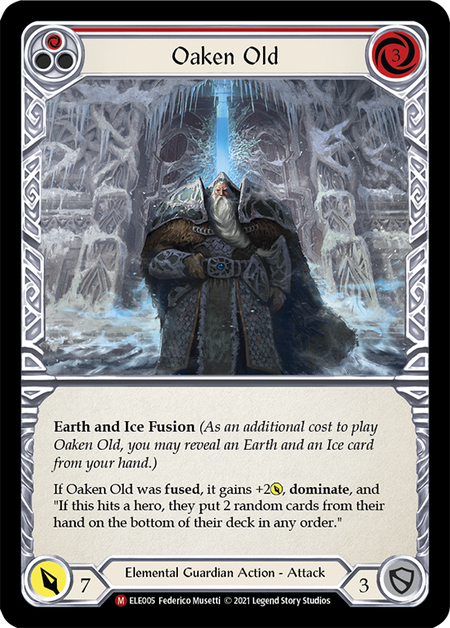

Prism, Starvo, and Chane represented a significant portion of the metagame towards the end of the season, which meant heroes needed a strong plan against at least two of the three to maintain relevance in the meta. Dash has a reasonably strong matchup into Prism, but struggles against Chane and has a near-unwinnable matchup into Starvo.
The most obvious changes this season are the ascension of Chane and Starvo to Living Legend status, rotating them out of the Classic Constructed format. The release of Uprising has also introduced three new heroes who are already making their mark on the Constructed metagame, changing the mixture of strategies that Dash must compete with and overcome.
Getting a Boost
As I alluded to above, Dash has access to both extremes of the aggro-to-control spectrum, allowing her the opportunity to choose whichever strategy is most effective in each matchup. While most heroes in the game can be built differently to accomplish different strategies, many heroes must choose that strategy at deck building.
Dash doesn’t need to sacrifice flexibility: one deck list for Dash can provide her with the tools to play aggro, control or anything in between, and the ability to change roles mid-match if she’s built carefully! As we enter the Uprising metagame, some of Dash’s tools stand out as her most powerful to establish a competitive edge.
For those unfamiliar with Dash’s strategy and card pool, Mark Chamberlain's Dash 101 article is an excellent place to start, outlining almost all of Dash’s notable tools and how one may apply them.
Some Assembly Required

Weapons
- Teklo Plasma Pistol (1)
Equipment
- Achilles Accelerator (1)
- Crown of Providence (1)
- Goliath Gauntlet (1)
- Nullrune Gloves (1)
- Teklo Foundry Heart (1)
- Viziertronic Model i (1)
Loadout
- Combustible Courier (Blue) (3)
- Erase Face (Red) (3)
- Maximum Velocity (Red) (2)
- Overblast (Red) (3)
- Meganetic Shockwave (Blue) (2)
- Throttle (Blue) (3)
- T-Bone (Red) (3)
- T-Bone (Yellow) (2)
- Combustible Courier (Red) (3)
- Spark of Genius (Yellow) (3)
- High Speed Impact (Blue) (3)
- Plasma Purifier (Red) (3)
- Zero to Sixty (Red) (3)
- Zero to Sixty (Blue) (3)
- Unmovable (Red) (2)
- Teklo Core (Blue) (2)
- High Octane (Red) (3)
- High Speed Impact (Red) (3)
- Induction Chamber (Red) (3)
- Teklo Pounder (Blue) (2)
- T-Bone (Blue) (3)
- Throttle (Red) (3)
- Zipper Hit (Red) (3)
- Tome of Fyendal (Yellow) (1)
- Zipper Hit (Blue) (3)
- Zero to Sixty (Yellow) (3)
- Zipper Hit (Yellow) (3)
This list has the tools to approach a wide variety of decks in the metagame and apply a mixture of aggression and setup with the pistol.
Powering Up
When discussing Dash’s tools for a control strategy, let’s start with an understated yet powerful factor: every non-Item Mechanologist card blocks for three! Combined with Dash’s strong incentive to only run Mechanologist cards, we end up with a deck that makes few concessions in its ability to block, the starting point of a great control deck. Dash also enjoys her abundance of 3-blocks when playing aggressively, as she can usually block more efficiently than the classes she’s trying to race.
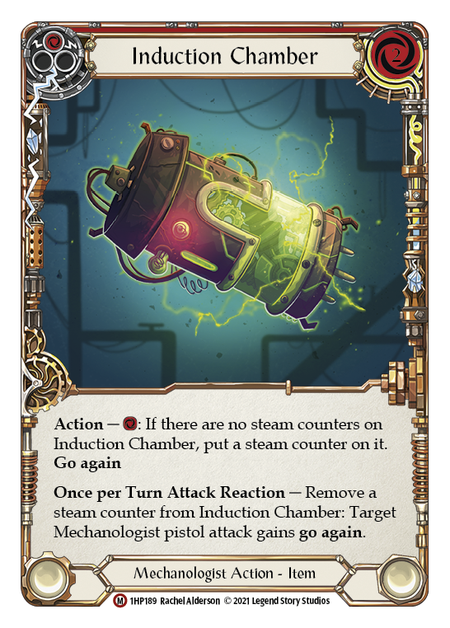
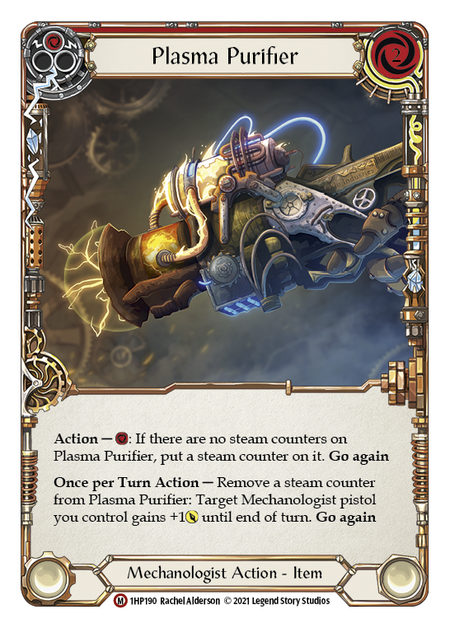
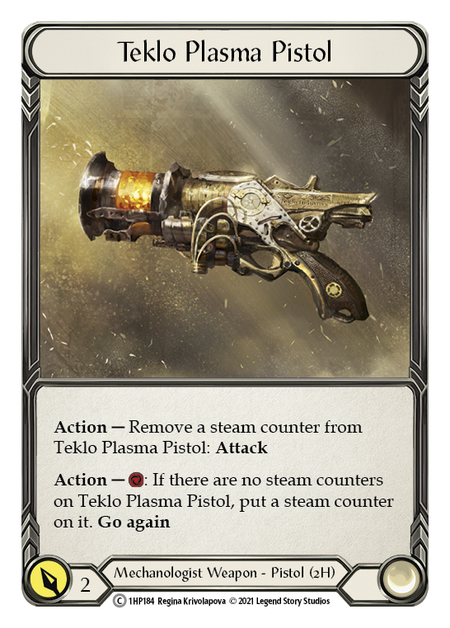
The core of Dash’s setup strategy is the Teklo Plasma Pistol, thanks to its unique ability to be prepared on a previous turn and its unusual lack of a “once per turn” limitation on firing. Her Induction Chamber and Plasma Purifier are essential to powering up the pistol, allowing it to either gain go again or hit harder until end of turn respectively, until it can single-handedly dominate the game with nothing but blue cards in hand.
This kind of strategy is most useful against heroes who would try to control and fatigue us, like Oldhim and Bravo, or other heroes who can set up a board state we must interact with, like Prism and Dromai. Boosting aggressively into any of these matchups runs the risk we end up banishing half the deck and playing or blocking with the other half, leaving us with nothing while our opponent survives! The pistol therefore provides a reliable endgame to close out the game or ensure sustained pressure against Illusionists’ allies and auras.
All Systems Go
Like any deck seeking to build with multiple potential strategies in mind, Dash needs a suite of tools that are applicable across almost all matchups.
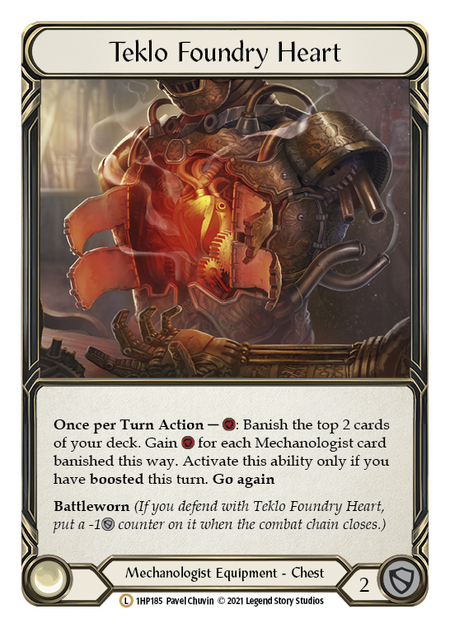
Teklo Foundry Heart is a high-risk, high-reward resource engine for Dash, providing her with an extra resource every turn at the cost of burning through her deck astonishingly quickly. Aggressive Dash builds will value the extra resource and use it frequently, while every Dash player enjoys up to 3 block in the Chest equipment slot (a rarity for most classes who would instead run Fyendal’s Spring Tunic).
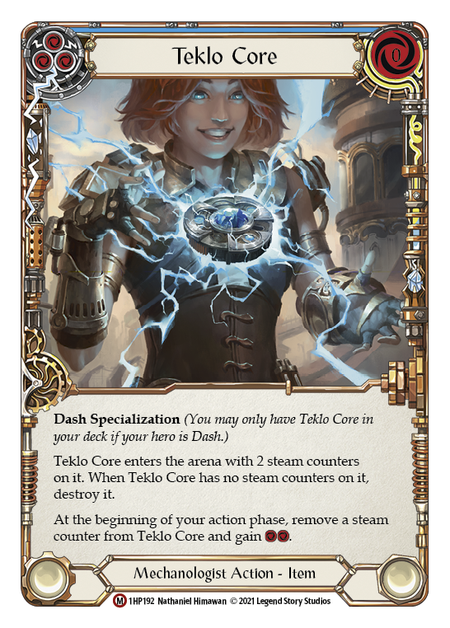
Teklo Core provides Dash with an abundance of resources to fund her turn, which can either facilitate superbly powerful four- and five-card hands in an aggressive strategy or enable effective counter pressure with a one-card or even empty hand in a more controlling strategy (which leaves more cards for blocking, an essential condition for control decks).
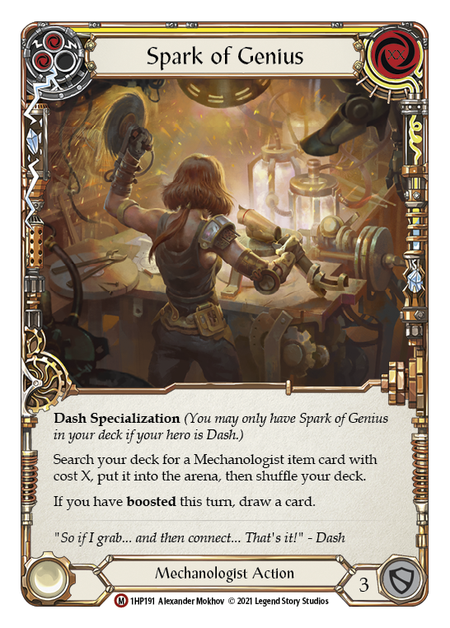
Dash never leaves home without her inventive ingenuity! Spark of Genius can act as an end to a turn of boosting to find a Teklo Core and ensure the arsenal is loaded for an even bigger next turn, or acts as an essential tutor effect to help Dash power up her Teklo Plasma Pistol with Induction Chambers and Plasma Purifiers, progressing her endgame in a setup strategy.

Tome of Fyendal is one of the few non-Mechanologist cards that finds its way into Dash decks, but the rewards it brings are thoroughly worth the small risk of missing a boost. The card draw effect can fuel some of Dash’s most overwhelming boost turns when coupled with a High Octane or an activation of the Achilles Accelerator, occasionally with the benefit of extra life gain when played from arsenal. Control strategies, meanwhile, will always seek to arsenal the card to gain some precious life after a few shots with the Teklo Plasma Pistol.
Full Steam Ahead
The heart of Dash’s aggressive strategy is the boost keyword, which offers conditional go again at the cost of the top card of our deck each time. If we banish a non-Mechanologist card this way, our turn can end suddenly and unexpectedly- but we can mitigate this risk very easily: just play (almost) no non-Mechanologist cards! There is still, however, the risk of running out of cards in deck, since every attack with boost in our deck costs us two cards to our opponent’s one. As a result, this strategy is best against heroes who aren’t naturally preparing for a particularly long game or heroes who are otherwise uninterested in blocking us, such as Rangers, Ninjas, and Wizards.
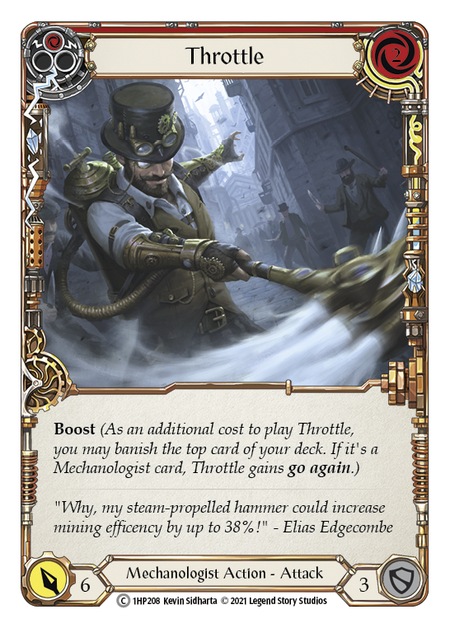
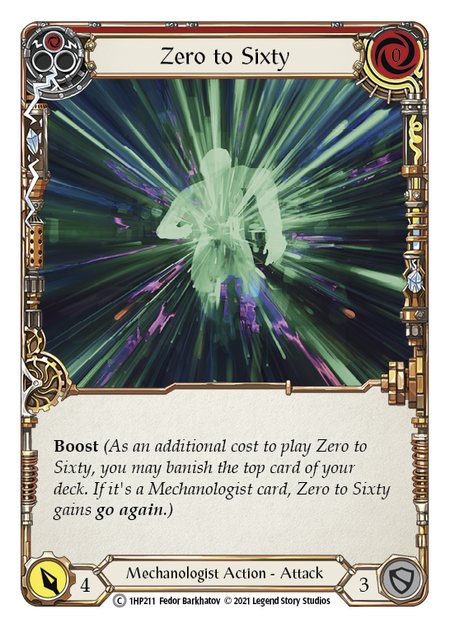
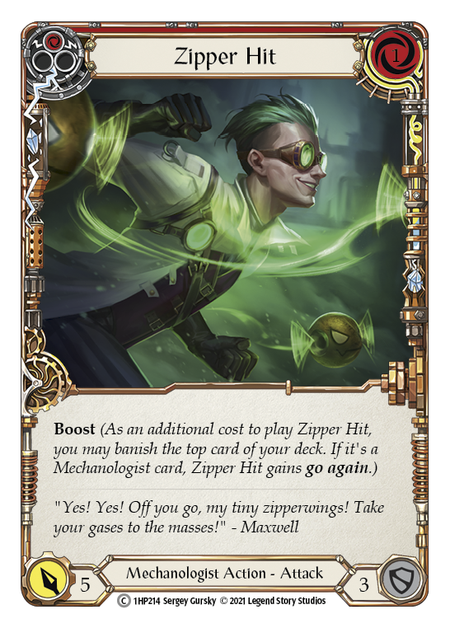
Dash’s most understated tools for aggression are the package of attacks with no text besides the boost keyword: Zero to Sixty, Zipper Hit, and Throttle. These attacks, while not flashy, are surprisingly impressive on rate – replace the word “Boost” with “Go Again” and this will quickly become apparent when compared to Generic attacks – with minimal requirement to be played for full value (compare Zero to Sixty to a card like Rune Flash).
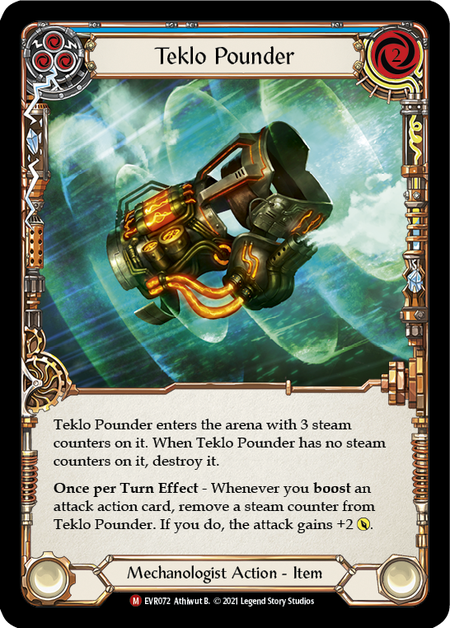
“Impressive on rate,” however, isn’t enough to swing aggro mirrors or overcome the staunchest control decks. Teklo Pounder is Dash’s newest tool to push the boundaries of how much damage she can concentrate into a few turns. Using the extra two damage it provides per turn to push your attacks to new breakpoints can make your opponent’s blocking decisions more awkward while also threatening their life total faster if they choose not to block. Prior to Everfest’s release, Dash would rarely start with any item besides an Induction Chamber, but Teklo Pounder has proved it’s powerful enough to supplant the Chamber in some matchups, effectively putting 6 extra damage on the board for free before the game even begins.
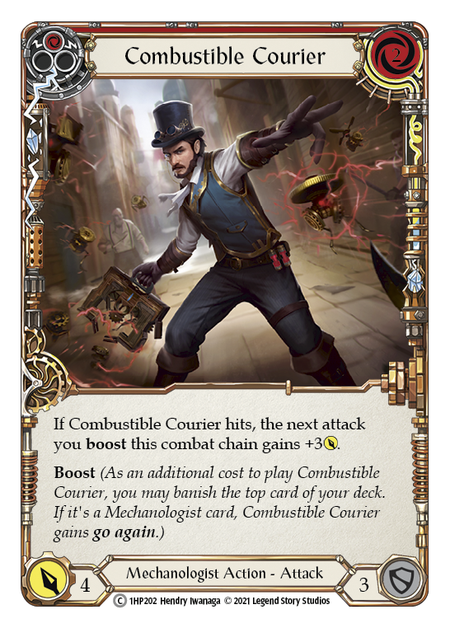
Mechanologist attacks rarely have access to powerful on-hit effects, likely as a balancing mechanic since they have easy access to go again. Combustible Courier is easily the most notable exception to that trend, providing an on-hit effect that threatens three additional damage- which can easily swing a match in Dash’s favor.

Maximum Velocity is one of the most impressive attacks in Flesh and Blood on pure rate, dealing a staggering 10 damage for just two resources- with the critical downside of having harsh requirements to play. Boosting three cards in a single turn and having the resources to pay for Maximum Velocity will always require five or more cards in a single turn (including items on the field). Teklo Core is a critical card for ensuring you could play Maximum Velocity, and helps greatly with the process. T-Bone, another relatively new card from Everfest, has also increased the reliability of being able to Boost three cards without significant resource cost, which reduces the number of times Maximum Velocity rots in your hand.
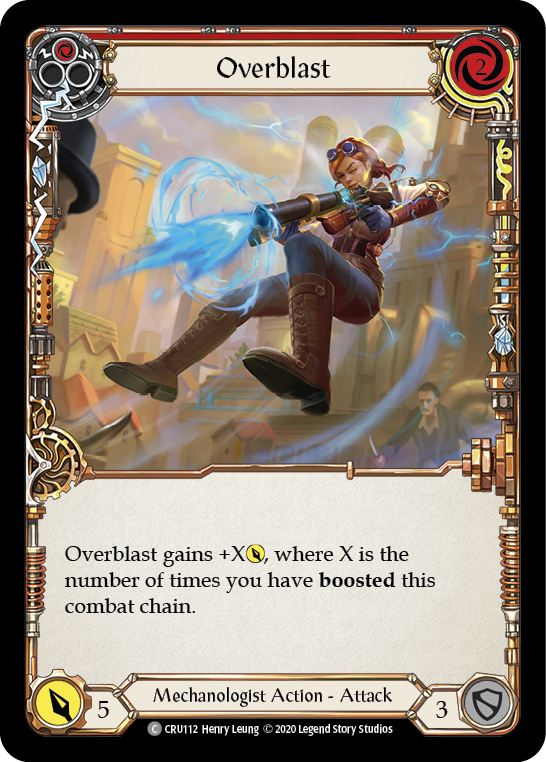
Overblast is a kind of “diet Maximum Velocity”, being much more consistent at the cost of being moderately less effective. Boosting twice in a turn makes Overblast above rate, and boosting three or even more times makes it a serious threat at the end of a turn.
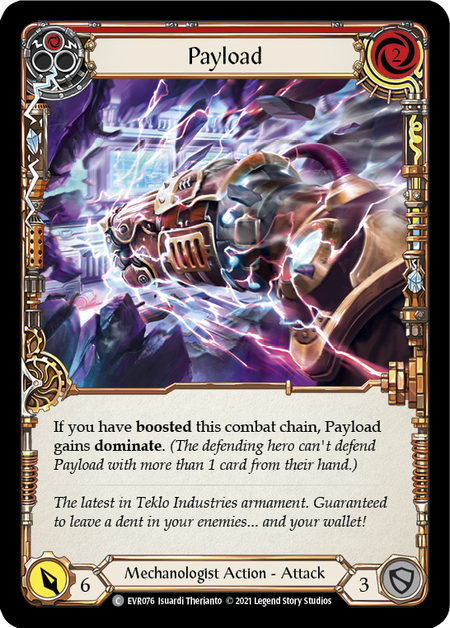
Payload serves a similar role of forcing damage after boosting, utilizing dominate rather than a more impressive attack power to do so. It’s not as flashy as most of the other cards discussed above, but dominate is a powerful keyword to achieve the ultimate goal of simply dealing enough damage to close the game.
Stocking the Toolbox
Like any control deck, Dash needs to prepare specific tools for specific matchups when she forgoes aggression for a slower game plan. In fact, she will often leverage some of these tools when she plays an aggressive plan too. It’s here where the flavor and function of Mechanologist truly shines: you always have the right tool for the job!
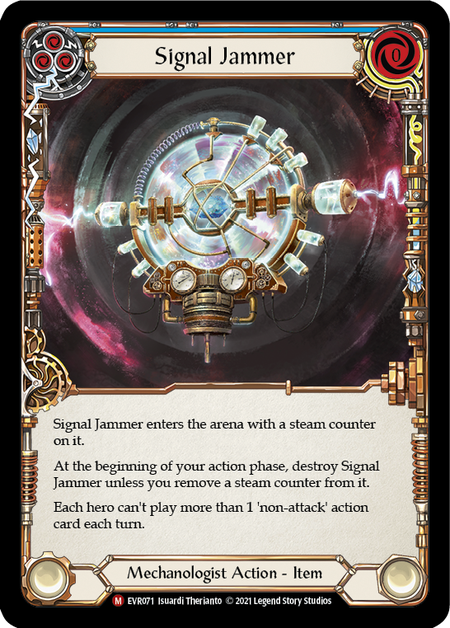
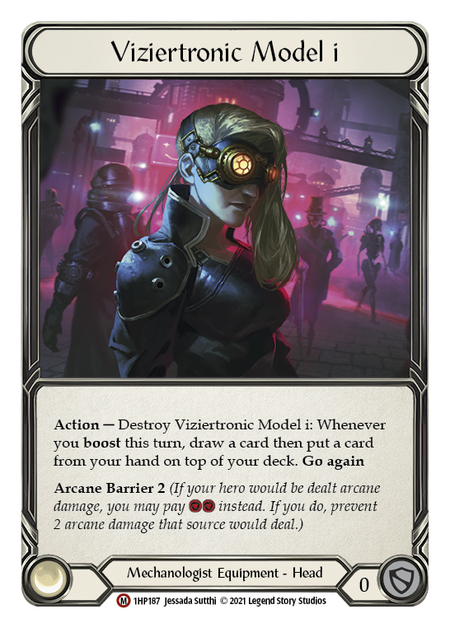
Against Wizards, Dash has access to a brilliant amount of Arcane Barrier through the Viziertronic Model I – combined with Arcane Barrier: 1 from Achilles Accelerator and Nullrune Gloves, she can easily have Arcane Barrier: 4 and still have Arcane Barrier: 3 after activating her boots to apply additional pressure! Signal Jammer can also be a real pain to Kano, who is often reliant on playing multiple non-attack actions each turn, and has some fringe utility against Briar and Viserai for disrupting Viserai’s Mordred Tide turns or stopping Briar from generating Embodiments of Lightning.
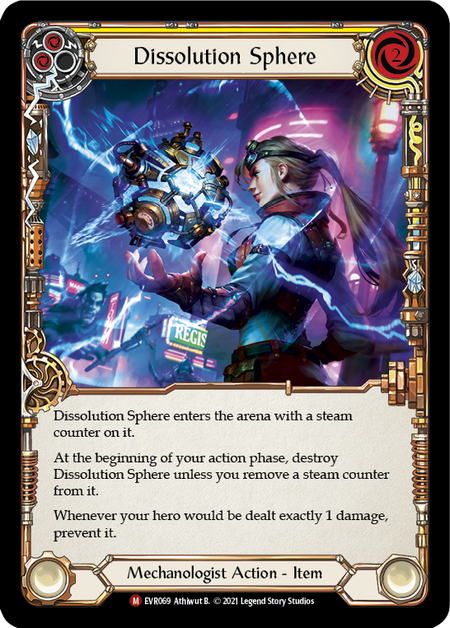
Dissolution Sphere has applications in a wide variety of matchups, since it can nullify any source of exactly one damage. This covers everything from Katsu's Harmonized Kodachi, to Fai's Phoenix Flames, to Dromai's Aether Ashwings or Prism’s auras, to Runechants from Viserai. In any matchup where you may be scared of a barrage of pings for one damage each, Dissolution Sphere can give you two turns of breathing room to pressure your opponent, or destroy the sources of that damage. It is costly and cumbersome to set up, however, so it’s worth considering whether the 2 resources, card from hand, and action point are really worth blocking a limited subset of your opponent’s damage output.
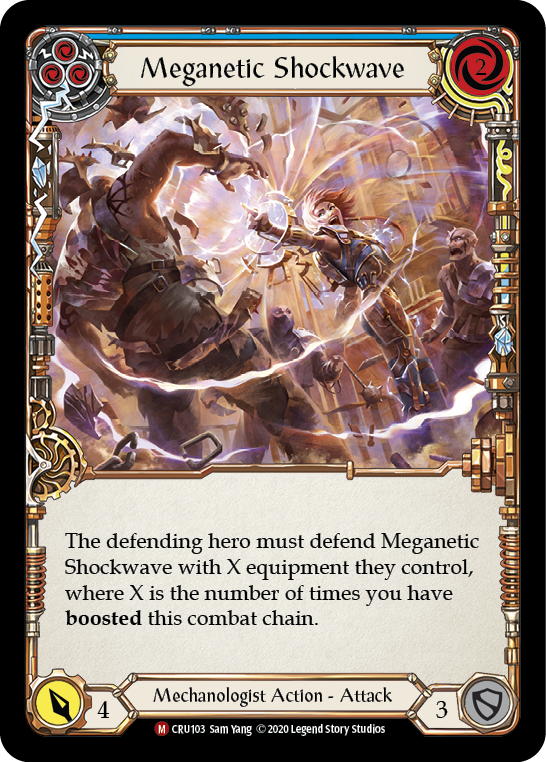

T-Bone is a highly multifunctional card for Dash: it’s a 0-cost Boost attack for enabling Maximum Velocity and general aggression, and it’s an attack which can force your opponent on block a comparatively unimportant attack with equipment. Meganetic Shockwave can be a powerhouse in conjunction with T-Bone against heroes who tend to use a lot of equipment with Temper or Blade Break. The combo of T-Bone into another T-Bone into Meganetic Shockwave will force your opponent to block with four pieces of equipment (usually all they have), swiftly shattering their Fyendal’s Spring Tunics and Crowns of Providence!
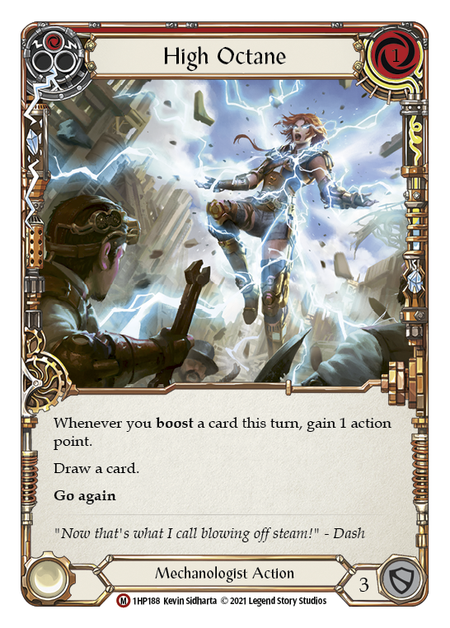
High Octane was long considered a staple card in Dash, but is now more of a piece of sideboard tech against Prism and perhaps Dromai. High Octane allows us to generate additional action points by boosting successfully (or occasionally saving us in the rare case of a failed boost), which allows us to end the turn by shooting the Pistol multiple times. Critically, since High Octane grants additional action points instead of ensuring go again, it allows us to deal with multiple auras with Spectra by firing the Pistol at them, since closing the chain will still leave us with more action points. Shredding Prism’s board state with a High Octane turn is critical for ensuring you can win the matchup.
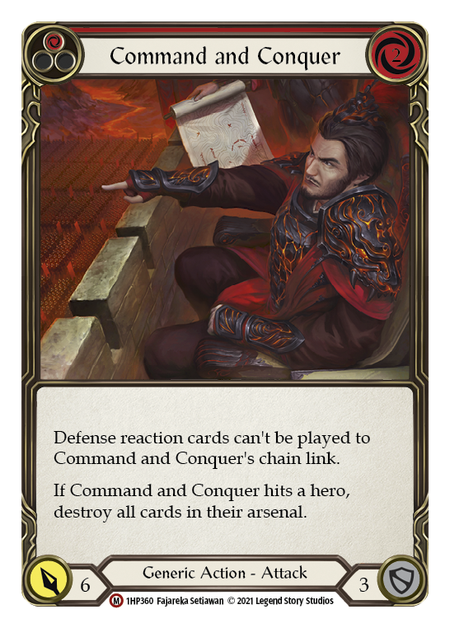
Command and Conquer is often the only other non-Mechanologist card besides Tome of Fyendal to warrant a place in Dash’s deck. Easily among the most powerful generic attacks in the game, Command and Conquer can threaten the arsenal of aggro decks that care about keeping five-card hands (or even six-card hands in the case of Rangers) and is a six-power attack to help pop phantasm against Illusionists (alongside Throttle (Red), Payload (Red), and Maximum Velocity).
Maintenance Notes
If you’re thinking of taking Dash to your local Road to Nationals, consider whether the local metagame is appropriate for her. Dash will always struggle most against decks that can survive her onslaught of boosted attacks but can still present effective pressure to counteract her pistol. As a result, I’d say she’ll have a hard time into Oldhim and Dromai, so maybe consider another hero if you’re expecting a lot of them. Otherwise, spend some time practicing against a range of decks, deciding what role you should take in the matchup, and which cards are most valuable for fulfilling that role.
I hope this has given you an impression of how you can pilot Dash to success in the Uprising metagame. Be sure to leave any cool tech I might have missed in the comments. Until then, may all your boosts be successful!




